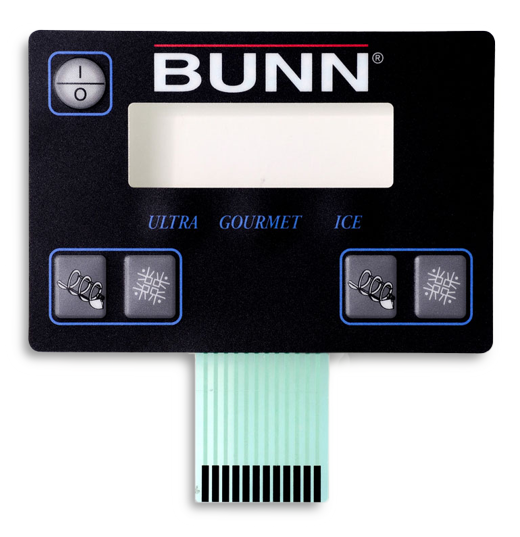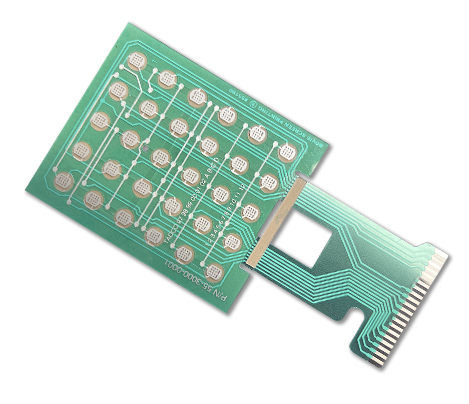How Membrane Switches Improve Functionality in Industrial and Consumer Applications
How Membrane Switches Improve Functionality in Industrial and Consumer Applications
Blog Article
Membrane Switches Over Explained: A Comprehensive Guide to Their Benefits
Membrane switches over stand for a functional and advanced option for developing interface throughout a range of fields. Their multilayered design not just makes sure performance through easy stress but likewise provides substantial advantages, such as toughness and personalization. As sectors increasingly look for trusted and effective control user interfaces, understanding the certain benefits and applications of membrane layer switches over comes to be vital. Nonetheless, the details of their layout and implementation present distinct challenges that advantage better exam. What elements should be considered to completely take advantage of their possibility in modern applications?
What Are Membrane Buttons?

When stress is put on the membrane layer switch, the layers make get in touch with, completing an electric circuit. This basic system enables for a large variety of applications, from customer electronic devices to industrial equipment. Membrane layer switches are frequently made to be resistant and water resistant to dust and impurities, making them suitable for environments where toughness is essential.
In addition, the versatility of the products used in membrane layer changes promotes innovative designs that can adapt different shapes and measurements. This versatility adds to their popularity in varied fields, consisting of clinical devices, vehicle controls, and home devices. In general, membrane switches over represent a critical aspect in modern user interface technology, connecting the space in between individuals and digital systems.
Trick Benefits of Membrane Buttons
Amongst the myriad of customer interface alternatives available, membrane switches over stick out for their unique mix of advantages. One of the key benefits is their light-weight and compact layout, which enables combination into a wide variety of gadgets without adding significant bulk. This is especially beneficial in applications where area is restricted.
Furthermore, membrane switches over offer durability and resistance to environmental variables. They are generally created with products that can endure moisture, dust, and numerous chemicals, making them suitable for severe conditions. This resilience adds to a longer lifespan contrasted to traditional mechanical buttons.
An additional considerable benefit is the adaptability in modification. Membrane layer switches can be printed with different graphics, shades, and structures, permitting customized layouts that meet specific branding or functional requirements. This adaptability reaches the number of layers and circuit choices, offering designers with multiple configurations.
In addition, the tactile feedback given by some membrane switches enhances individual experience, making them extra instinctive to run. Finally, the ease of cleansing and maintenance further solidifies membrane layer buttons as a functional option in both consumer and industrial applications. Membrane Switches. In general, these key benefits make them a favored solution for several developers and manufacturers
Applications in Numerous Industries
Just how do membrane layer switches discover their place throughout varied industries? Their versatility and capability make them integral parts in sectors ranging from medical care to consumer electronics. In medical gadgets, membrane buttons are made use of for their simplicity of cleaning and resistance to contamination, ensuring hygiene in environments where sterility is crucial.
In the consumer electronic devices industry, these buttons give smooth, easy to use user interfaces that improve product aesthetics while preserving toughness versus wear and tear. Automotive applications take advantage of membrane switches as well, where they are utilized in dashboards and control board, offering reputable efficiency in tough problems.
Additionally, commercial equipment employs membrane layer buttons for control panels as a result of their toughness, ability to stand my latest blog post up to rough settings, and adjustable designs that satisfy particular operational requirements. The food sector leverages membrane switches for their convenience of usage and resistance to spills, guaranteeing functional effectiveness in fast-paced settings.
Ultimately, the flexibility of membrane changes across these diverse applications underscores their vital duty in modern technology, enhancing customer interaction while satisfying industry-specific requirements. Their continued advancement promises additional combination into arising fields and innovative items.
Style and Customization Choices
The style and personalization options readily available for membrane layer switches are crucial for tailoring interfaces to satisfy certain customer needs and visual choices. These switches can be designed in different forms, sizes, and formats, enabling seamless combination into diverse applications. The flexibility in design suggests that producers can develop one-of-a-kind user interfaces that enhance use and preserve brand name identification.
Custom-made shades, appearances, and graphics can be related to the surface of the membrane button, giving a chance for branding and customer involvement. In addition, backlighting options, such as LED illumination, can be incorporated to improve presence in low-light conditions, therefore improving functionality.
Practical elements can additionally be tailored, consisting of tactile feedback and actuation force, which can be adjusted to match different user interactions. The selection of materials, such as polyester or polycarbonate, enables variations in toughness and environmental resistance, dealing with the specific needs of various industries.
Ultimately, the considerable style and personalization capabilities of membrane layer switches make it check here possible for business to produce aesthetically enticing and straightforward user interfaces, making sure that their products meet both useful and visual needs properly. Membrane Switches.
Factors To Consider for Execution
Applying membrane layer switches over calls for cautious factor to consider of various elements to make certain optimal performance and user experience. One of the primary factors to consider is the intended application atmosphere. Factors such as direct exposure to dampness, severe temperatures, and chemical materials can dramatically affect the switch's efficiency and longevity. Selecting materials that stand up to these problems is critical.

Another essential element is the button's layout and design. Ensuring that the tactile comments and actuation pressure align with user assumptions enhances usability. Carrying out individual testing can offer important understandings into the optimal layout.
Additionally, compatibility with digital elements must be evaluated. The switch's wiring need to align with the total system design, making sure dependable signal transmission and minimizing disturbance.
Additionally, manufacturing methods and prices must be evaluated. The choice between custom styles and conventional versions can influence both budget and lead time.
Last but not least, consider maintenance and fixing. Membrane layer switches may require certain cleansing and treatment treatments to preserve their appearance and functionality in time. By resolving these factors to consider, organizations can execute membrane layer buttons that meet their operational needs while offering a favorable user experience.

Conclusion
To conclude, membrane layer switches represent a sturdy and functional control interface suitable for a vast array of applications throughout multiple sectors. Their portable design, resistance to ecological elements, and adjustable features improve user experience while meeting certain branding requirements. As modern technology remains to progress, the significance of membrane layer buttons in contemporary tools continues to be substantial, using both functionality and aesthetic appeal. Future improvements will likely further increase their applications and performance in numerous atmospheres.
Membrane layer switches over represent a advanced and versatile solution for producing individual interfaces throughout a range of sectors.Recognizing the fundamental components of modern-day digital interfaces, membrane buttons are a type of customer interface tool that are composed of versatile, check my source thin layers of product. Generally, membrane layer switches over stand for an important component in modern-day user interface innovation, connecting the gap between individuals and electronic systems.
Amongst the myriad of customer interface options available, membrane layer changes stand out for their special mix of advantages.The layout and modification choices offered for membrane layer buttons are vital for tailoring user interfaces to satisfy specific individual needs and visual choices.
Report this page